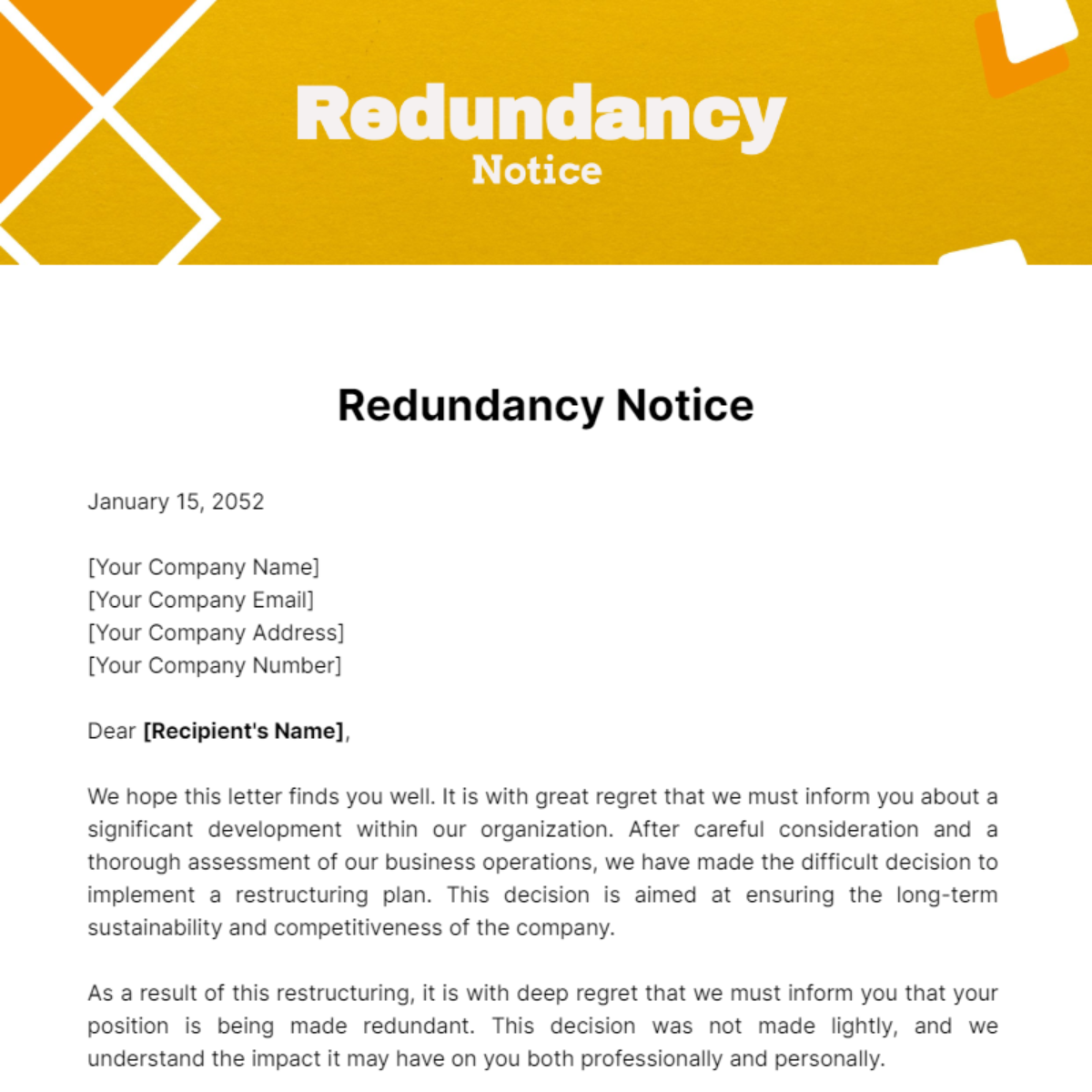Small Business Closing Employee Rights UK: What You Need to Learn About Redundancy
Small Business Closing Employee Rights UK: What You Need to Learn About Redundancy
Blog Article
Examining the Interplay Between Firm Redundancy and Business Flexibility for Future Growth
In the dynamic landscape of today's organization world, the complex partnership between company redundancy and business versatility arises as an important element for continual development and success. Business commonly face the challenge of striking a fragile balance between maintaining a degree of redundancy to mitigate threats and promoting versatility to respond quickly to the ever-evolving market demands. This delicate interplay holds the key to not only enduring in turbulent times yet additionally flourishing despite uncertainty. As we check out the complex measurements of this interplay, appealing insights right into how companies browse these complexities to lead the means for future development wait for.
Value of Business Redundancy
Business redundancy is an essential element that improves business durability and alleviates functional dangers. By integrating redundancy steps within the organizational structure, business can much better stand up to unforeseen disturbances and fluctuations in business setting. Redundancy acts as a strategic buffer, enabling firms to adjust and react properly to unanticipated challenges without compromising essential operations.
One key element of the value of company redundancy is its function in guaranteeing continuity during times of crisis. When confronted with sudden adjustments or emergency situations, redundant systems, sources, or workers can action in to preserve critical features and avoid widespread interruptions. This connection not only safeguards the business's online reputation and client trust however likewise decreases economic losses and operational downtime.

Approaches for Organizational Versatility

Another important strategy is buying innovation and infrastructure that can support flexibility and scalability. Implementing digital tools, automation, and data analytics can enhance operations, improve effectiveness, and offer beneficial understandings for informed decision-making. Furthermore, creating versatile organizational structures that permit quick modifications to market dynamics and consumer needs is necessary for remaining affordable in a rapidly evolving setting. By proactively recognizing prospective interruptions and possibilities, companies can proactively flourish and adapt in an ever-changing company landscape.
Balancing Redundancy and Flexibility
Attaining an unified balance in between functional redundancy and business adaptability is paramount in browsing the intricacies of a dynamic business environment. Striking the appropriate equilibrium in between redundancy and adaptability is a fragile procedure that needs a deep understanding of the organization's goals, market characteristics, and danger tolerance.
To attain this equilibrium, business need to perform routine evaluations of their procedures to recognize areas where redundancy is required for danger reduction and look here where versatility can drive development and development. Applying versatile frameworks, promoting a society of continuous knowing and renovation, and encouraging open interaction throughout all degrees of the company are essential strategies to balance redundancy and adaptability effectively. By lining up these 2 critical components, companies can position themselves for sustainable useful link growth and success in an ever-changing company landscape.
Situation Research Studies on Adaptation Success
In checking out circumstances of successful business adjustment, it becomes apparent that the interplay between functional redundancy and adaptability is a specifying aspect in forming durable companies. A DVD rental service, Netflix showed remarkable flexibility by transitioning into a streaming system when digitalization disrupted the sector. These instance researches underscore the importance of operational redundancy coupled with organizational adaptability in fostering long-term development and competition.
Structure Strength for Future Development
Building strength for future growth requires a calculated positioning of operational procedures with market dynamics and arising trends. Business must adapt to transforming atmospheres by fostering a culture of adaptability, advancement, and continuous enhancement.
Moreover, promoting solid connections with stakeholders, such as consumers, employees, vendors, and the community, is crucial for weathering uncertainties and keeping trust and support throughout turbulent times. Efficient interaction and transparency play a crucial duty in building durability, as they assist straighten assumptions and assist in cooperation in browsing uncertainties.
Additionally, companies require to focus on understanding and development efforts to upskill workers and furnish them with the essential devices to adapt to transforming conditions. By purchasing their workforce, business can improve their flexibility and dexterity, inevitably reinforcing their resilience for sustainable future growth.
Final Thought

In the dynamic landscape of today's organization world, the his response complex connection in between company redundancy and business flexibility emerges as a critical element for continual development and success. Companies typically encounter the challenge of striking a delicate balance in between keeping a degree of redundancy to minimize risks and promoting versatility to react swiftly to the ever-evolving market demands.To accomplish this equilibrium, firms require to conduct routine analyses of their procedures to recognize areas where redundancy is needed for threat reduction and where adaptability can drive development and growth.In final thought, the interaction in between firm redundancy and business flexibility is crucial for future growth. Building resilience through a combination of redundancy and flexibility will certainly make certain that firms are prepared for the challenges of the future.
Report this page